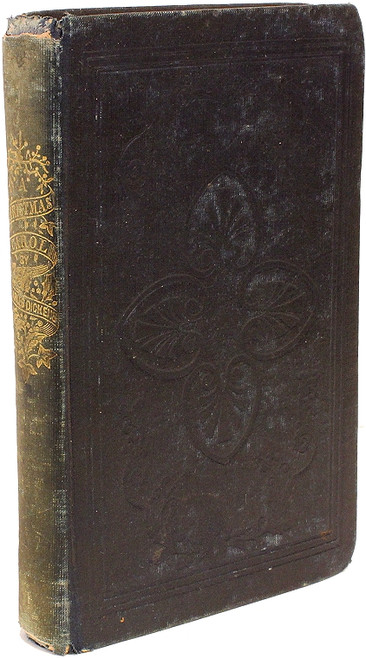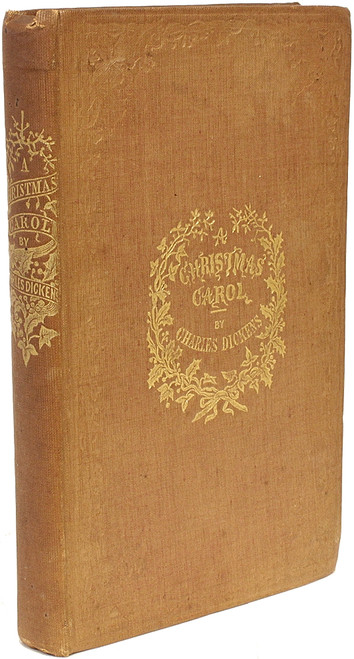
DICKENS, Charles. A Christmas Carol In Prose Being A Ghost Story of Christmas. (1844 - FIRST AMERICAN EDITION IN THE RARE BLUE GIFT BINDING)
- SKU:
- 001896
AUTHOR: DICKENS, Charles.
TITLE: A Christmas Carol In Prose Being A Ghost Story of Christmas.
PUBLISHER: Philadelphia: Carey & Hart, 1844.
DESCRIPTION: FIRST AMERICAN EDITION IN THE RARE BLUE GIFT BINDING. 1 vol., 6-1/8" x 3-7/8", title-page printed in red and blue, 4 hand colored plates & 4 B&W plates by John Leech. Bound in the publisher's special gift binding, with stamp of "J. C. Russell, Binder" incorporated into the border rules, rib-grain blue cloth, front cover gilt with double-rule border and frame composed of floral and other tools, rear cover with same design in blind, spine gilt in close imitation of the Chapman and Hall design, yellow glazed pastedowns and endpapers, plain edges.
CONDITION: Inner and outer hinges fine, head and foot of spine fine, back corners square with some minor rubbing, some very minor toning to pages, occasional spotting, old damp stain affecting the lower corner only of the first 3 blank endleaves, no previous ownership markings, gift inscriptions, or bookplate, overall a VERY GOOD un-repaired unsophisticated copy in the scarce blue cloth, housed in a light blue cloth clamshell slipcase.
ADDITIONAL INFORMATION: During his American tour the previous year, Dickens had made an impassioned plea for international copyright protection, but to no avail. Both this volume and the [Harpers pamphlet of the same year] were pirated ("A Ha! Christmas"). This Carey and Hart edition lifted not only Dickens's text, but Leech's illustrations, and many design elements as well.
We can locate only 2 copies in the "gift" binding to ever appear at auction the last in 2007. Both these copies were in the typical brown/buff cloth. Gimbel A80.4 describes a similarly bound copy by Russell in blue cloth; no copies are noted in Suzannet or Van der Poel catalogues, it is not mentioned in Edgar & Vail's checklist of Early American Editions of the Works of Charles Dickens (New York, 1929), nor have we been able to find any copy (in blue cloth) to ever appear at auction.
Regarded as Dicken's most widely read novel and considered to be "the greatest Christmas book ever written in any language" (Eckel p. 116) selling more than 6000 copies in the few days leading up to Christmas. The work was extravagantly costly as Dickens for the first time (and incidentally his last) used color in the title-page and etchings as he wanted to make the book a beautiful gift and to be a celebration of the Christmas spirit. After the initial success, Dickens continued the series throughout the 1840's, maintaining "the Carol" philosophy to "strike a sledgehammer blow" for the poor, uneducated, and repressed.

















